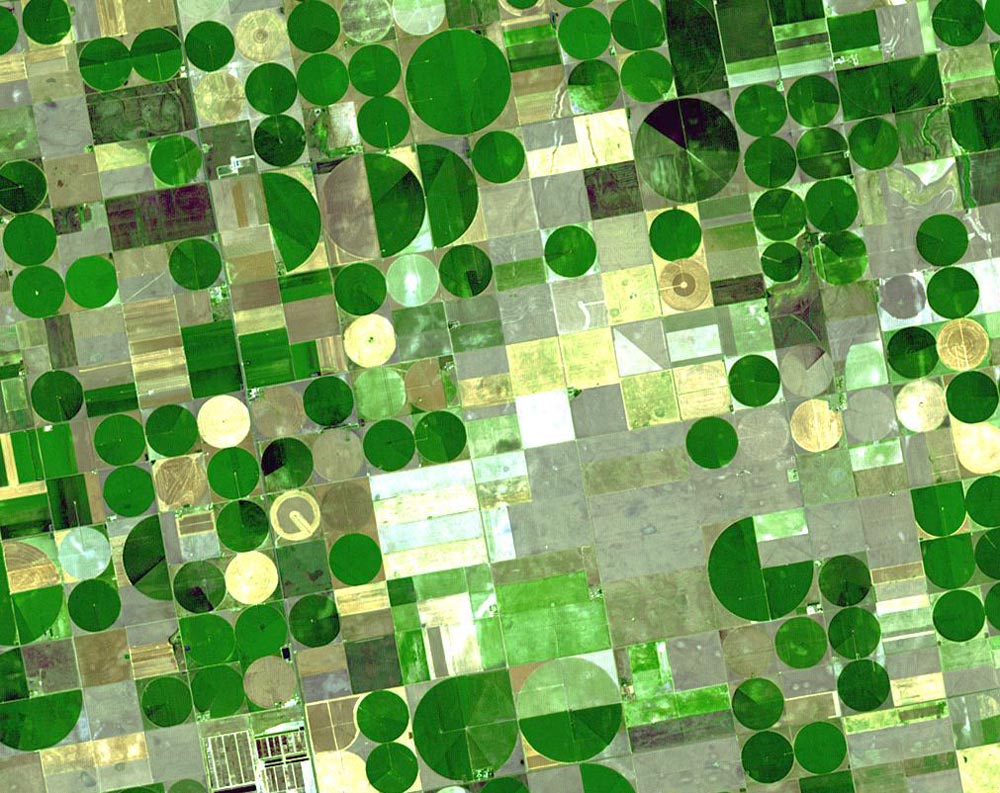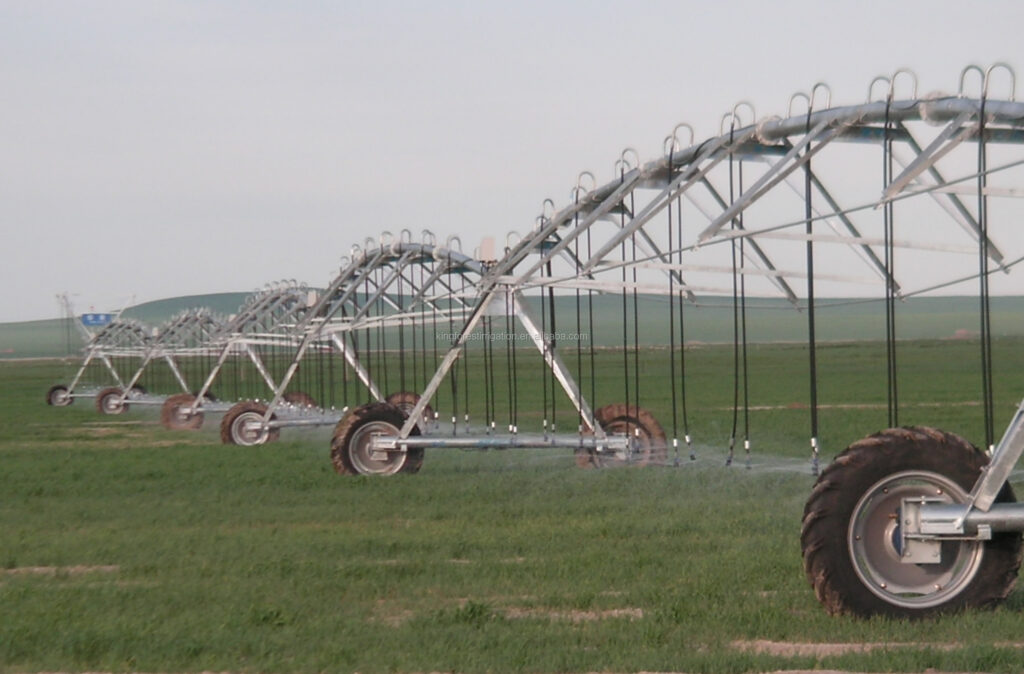You can see the Colorado Plateau on this map. And boy, aren’t our mountains in the east rather meager compared to the Rockies?


You can see the Colorado Plateau on this map. And boy, aren’t our mountains in the east rather meager compared to the Rockies?

You might be surprised, but the lowly zero used to be forbidden.
Sometimes when flying over the middle states, you might see something like this:

Some of the more comedic then say “Look! Crop Circles!” Well, yes, they are crops, and they are in circles, but these aren’t made of aliens. If you got down to the ground to view them close up, you’d see something like this:

So, how does that make the green circles? I’ve wanted to know more, and conveniently Destin at SmarterEveryDay just made this video that explains it really well:
Thanks for explaining all that Destin!
In instagrams.
According to this article, bats spend less time hunting for food when the moon is out, supposedly to avoid being eaten themselves.
Spiders are awesome. If you’ve ever seen a dead spider you know that they curl up when they die. They do this because that’s the normal position for the legs; to keep the legs spread out the spider pushes fluid into the legs, which straightens them. Yes, spiders use hydraulics.
So some enterprising engineering people at Rice University decided to use a syringe to actuate this hydraulic system. And she can use it to pick stuff up and put it back down. It turns out that dead spiders can be used as robotic claws. Neat!
The temperature in Antarctica is about 70° warmer than normal. This is much warmer than climate models predicted. Granted, it’s still below freezing, but this does not bode well.
For years I’ve been fascinated by the deepest humans have ever dug into the Earth. The Kola Superdeep Borehole in the Kola peninsula of Russia is over 12 km deep. It took 20 years to dig that far, and they had to stop because it was so hot down there (180 °C) that the rock was plastic and flowed, making drilling nearly impossible. The project was stopped in 1995.
But it looks like scientists may have found a way to dig deeper holes, and use the great heat down there to generate power. We’ve been using geothermal power for a long time, but it hasn’t been feasible to do in where the surface crust isn’t hot. The really interesting thing is the way we may be able to drill deep, down to where it’s 500 °C.
Quaise, a spinoff from MIT, has a way to use millimeter-wave beam technology to easily and quickly break even the hardest rocks. They claim to be able to complete a 20 km deep hole in just over 100 days.
If this works (and that’s still a big if), it could lead to reliable geothermal power, without requiring CO2 emissions after the hole is dug. They’re looking to have a 100 megawatt geothermal plant operating in 2026.
I’ve been learning about the History of Science courtesy of Crash Course. It’s really interesting.
I first found out that the history of science was fascinating from Connections by James Burke. This was a PBS series back in the day (the late 1970s) (and it’s not really PBS, since it came across the pond from the BBC), and each one traced a series of scientific and technological discoveries from ancient to modern times. The first episode traced the invention of the plough to modern power blackouts. While the show looks dated (hey, it’s over 40 years old!), if you can get past that, it really rewards viewing. You can watch it on YouTube here.
Anyway, the YouTube playlist for the Crash Course History of Science is 46 episodes long, so I have some watching ahead of me.
Well, I just finished it today. There’s a lot there to unpack. I think they did a really good job with it. I’m also watching their course on Outbreak Science, and I want to start watching Geography; I’ve always liked maps.
#crashcourse
Do you know how to read?
At this point, since you’re reading this, I expect so. But it turns out that there are different levels of reading, depending on your ability and what you’re trying to learn. Each level builds on the previous levell
Elementary Reading
This is the simplest level of reading, when you just want to know what this sentence says. This is what you’re doing when you’re learning a foreign language.
Inspectional Reading
This is used to find out what the book/article is about. It can be done with skimming or superficial reading.
Skimming is when you read the different headings to get a gist of the structure, then go back to the beginning and read the first few sentences in each paragraph. This will give you the overall idea of the article, but nothing like real understanding.
Superficial reading is when you just read. You read every word, one after another. This is what we usually do when reading for pleasure, so it’s probably what you’re most used to doing. But again, it isn’t really about understanding.
Analytical Reading
This is where we get into really thinking about what we’re reading, but it takes more time and effort. You ask questions about what you’re reading and organize your thoughts. You take notes on what you read; perhaps have a bit of debate with the author. You’ll understand the material much better.
But we’re still not done.
Syntopic Reading
Instead of reading just one book/article, read different ones from different points of view. You actively compare the different books, evaluating the evidence and analysis provided. This is the highest level, and the most demanding of both time and effort.
When reading in school, at least in middle school, it’s best to be doing Analytical Reading. Think about what is being said. What does it imply? Are there things that are missing or that you’re confused about? Write things down in your own words summarizing what the author said.